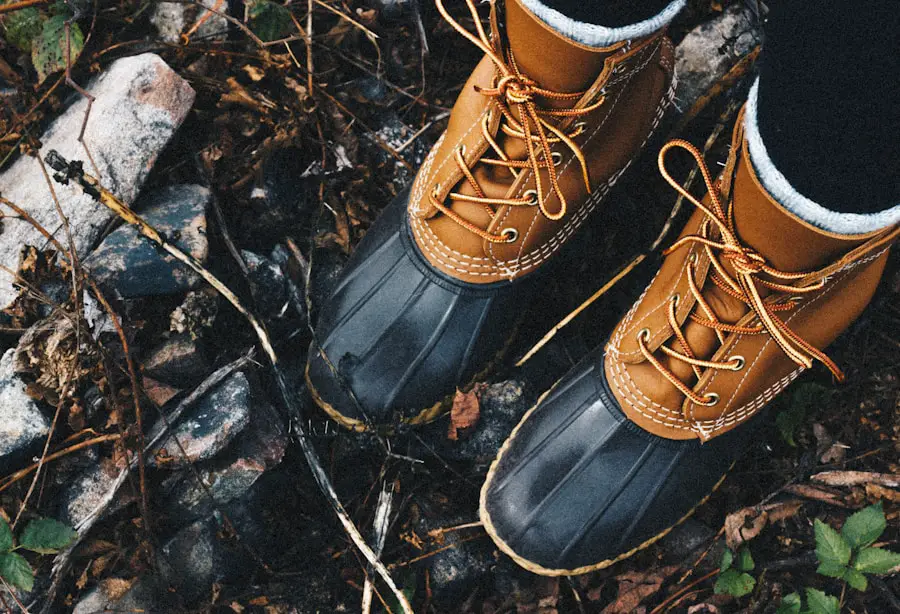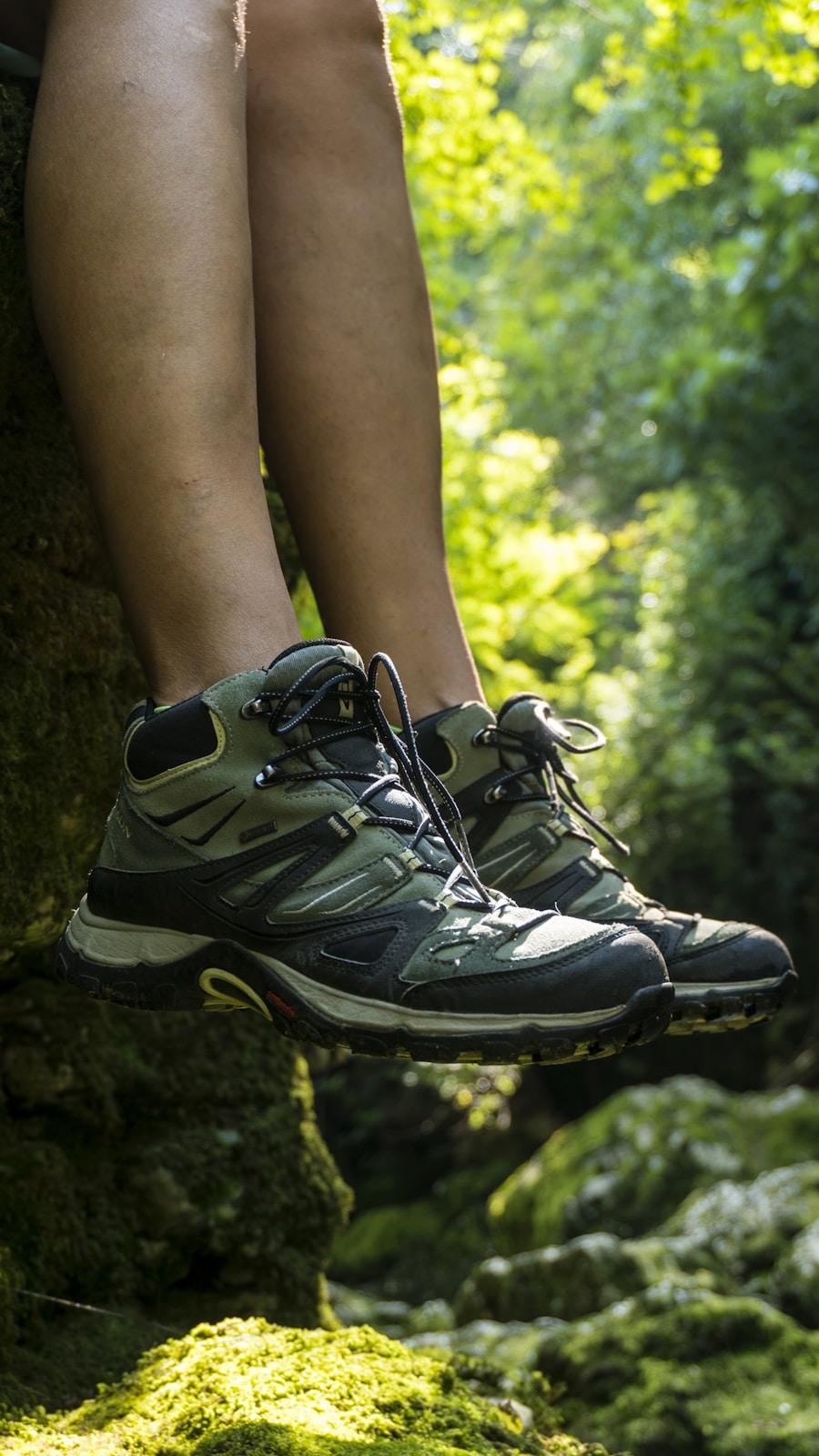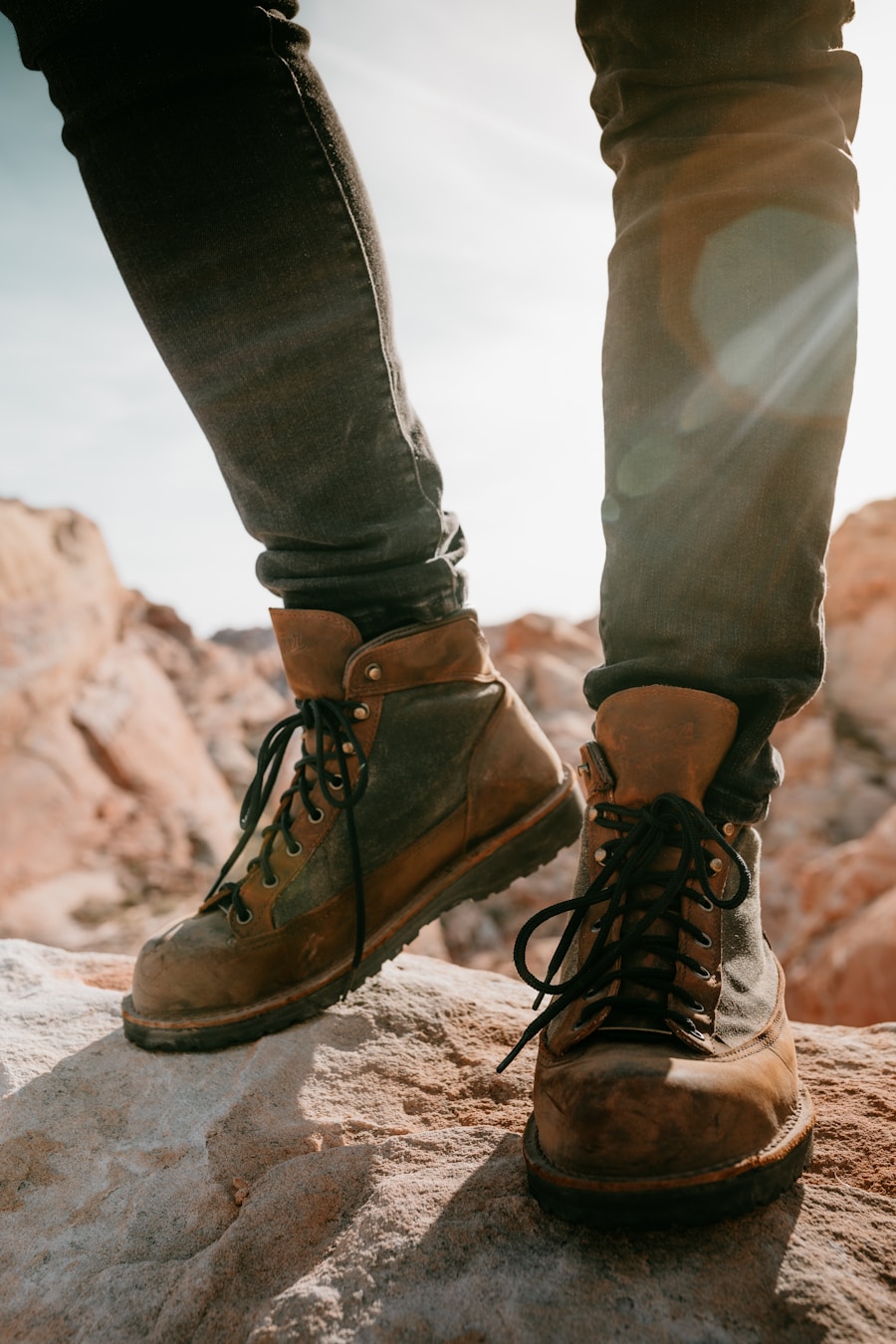Military boots have long been synonymous with durability, resilience, and functionality. Designed to withstand the rigors of combat and various terrains, these boots are engineered to provide support, protection, and comfort under extreme conditions. As outdoor activities gain popularity, many hikers are turning to military boots as a viable option for their adventures.
The rugged design and robust materials of military boots can offer advantages in challenging environments, making them an appealing choice for those who venture into the wilderness. Hiking, on the other hand, is an activity that encourages exploration and connection with nature. It ranges from leisurely walks on well-maintained trails to strenuous treks through rugged landscapes.
The right footwear is crucial for ensuring comfort and safety during these excursions. While traditional hiking boots are specifically designed for this purpose, the increasing interest in military boots raises questions about their suitability for hiking. Understanding the nuances between these two types of footwear can help outdoor enthusiasts make informed decisions about their gear.
Key Takeaways
- Military boots are designed for combat and rugged terrains, while hiking boots are designed for outdoor activities and long walks.
- Military boots are typically heavier and sturdier, while hiking boots are lighter and more flexible.
- Pros of using military boots for hiking include durability and ankle support, while cons include weight and lack of breathability.
- When choosing military boots for hiking, consider factors such as material, weight, ankle support, and breathability.
- To break in military boots for hiking, wear them around the house and on short walks before hitting the trails.
Differences Between Military Boots and Hiking Boots
The primary distinction between military boots and hiking boots lies in their intended purpose and design features. Military boots are crafted to meet the demands of soldiers in various environments, including combat zones, where durability and protection are paramount. They often feature reinforced toe caps, puncture-resistant soles, and water-resistant materials to shield the wearer from harsh conditions.
The construction of military boots typically emphasizes stability and ankle support, which is essential for navigating uneven terrain while carrying heavy loads. In contrast, hiking boots are designed with a focus on comfort and flexibility for prolonged wear on trails. They often incorporate lightweight materials that allow for better breathability and moisture management.
Hiking boots may also feature specialized cushioning systems to absorb shock during long walks, as well as aggressive tread patterns for enhanced traction on diverse surfaces. While both types of footwear prioritize support and protection, hiking boots tend to be more adaptable to varying trail conditions, whereas military boots are built for resilience in extreme situations.
Pros and Cons of Using Military Boots for Hiking

One of the significant advantages of using military boots for hiking is their exceptional durability. Constructed from high-quality materials such as leather and synthetic fabrics, these boots can withstand abrasions, punctures, and harsh weather conditions. This durability translates into a longer lifespan compared to many traditional hiking boots, making them a cost-effective choice for avid hikers who frequently traverse rugged terrains.
Another benefit is the level of ankle support provided by military boots. The higher cut of these boots offers additional stability, which can be particularly advantageous when carrying heavy packs or navigating rocky paths. Furthermore, military boots often come equipped with features such as waterproof linings and reinforced soles that enhance their performance in wet or uneven conditions.
However, there are also drawbacks to consider when opting for military boots for hiking. One notable concern is weight; military boots tend to be heavier than standard hiking footwear due to their robust construction. This added weight can lead to fatigue over long distances, especially on extended hikes where every ounce matters.
Additionally, the stiffness of military boots may hinder flexibility, making it challenging to adapt to the natural movement of the foot during a hike. Another potential downside is breathability. While many military boots are designed with moisture-wicking properties, they may not offer the same level of ventilation as dedicated hiking boots.
This can lead to discomfort during warmer weather or on strenuous hikes where foot perspiration is heightened. Hikers should weigh these pros and cons carefully when considering military boots as an alternative to traditional hiking footwear.
Considerations for Choosing Military Boots for Hiking
| Consideration | Description |
|---|---|
| Material | Leather, nylon, and suede are common materials used in military boots for hiking. Leather provides durability and water resistance, while nylon and suede offer breathability and flexibility. |
| Weight | Lightweight boots are ideal for long hikes, while heavier boots provide more support and protection. Consider the trade-off between weight and support based on the intended use. |
| Traction | A good tread pattern and durable outsole are essential for providing traction on various terrains, including rocky, muddy, and slippery surfaces. |
| Waterproofing | Waterproof boots are necessary for hiking in wet conditions, while breathable boots are better for hot and dry climates. Consider the climate and terrain where the boots will be used. |
| Ankle Support | Boots with high ankle support provide stability and reduce the risk of ankle injuries, especially on uneven terrain. Consider the level of ankle support based on the hiking environment. |
| Fit and Comfort | Proper fit and comfort are crucial for preventing blisters and foot fatigue during long hikes. Consider trying on different boots to find the best fit for your feet. |
| Insulation | Insulated boots are necessary for hiking in cold weather, while non-insulated boots are better for warm climates. Consider the temperature range of the hiking environment. |
When selecting military boots for hiking, several factors should be taken into account to ensure they meet the specific needs of the hiker. First and foremost is fit; a proper fit is crucial for comfort during long hikes. Military boots should provide enough room in the toe box while ensuring a snug fit around the heel to prevent blisters and discomfort.
Trying on different sizes and styles is essential, as variations in design can affect how the boot fits on an individual’s foot. Another important consideration is the type of terrain that will be encountered during hikes. For rocky or uneven trails, opting for military boots with a rugged outsole and good traction is vital.
The tread pattern should provide grip on various surfaces, including mud, gravel, and wet rocks. Additionally, hikers should consider whether they need waterproof capabilities; if traversing through streams or wet environments is expected, choosing a boot with a waterproof lining will help keep feet dry. The weight of the boot is also a critical factor.
While military boots are known for their durability, they can be heavier than traditional hiking footwear. Hikers should assess their own strength and endurance levels when selecting a boot; those planning long-distance hikes may prefer lighter options that still offer adequate support and protection. Lastly, examining the boot’s insulation properties is essential if hiking in colder climates; some military boots come with thermal linings that can provide warmth during chilly conditions.
Tips for Breaking in Military Boots for Hiking
Breaking in military boots is an essential step before embarking on any hiking adventure. Properly breaking in the boots can help prevent blisters and discomfort during long treks. One effective method is to wear the boots around the house or during short walks before taking them on more demanding hikes.
This gradual acclimatization allows the materials to soften and conform to the shape of the foot. Another useful technique involves using thick socks while breaking in the boots. Wearing thicker socks can help stretch the material slightly while providing additional cushioning against pressure points.
It’s advisable to start with shorter durations of wear and gradually increase the time spent in the boots as they begin to feel more comfortable. Additionally, applying leather conditioner or waterproofing treatments can enhance flexibility and protect against moisture damage during this process. Hikers should also pay attention to any areas of discomfort during the break-in period.
If specific spots cause irritation or pain, it may be necessary to adjust lacing techniques or consider using insoles for added support. Some hikers find that using moleskin or blister pads on problem areas can provide relief while breaking in new footwear. Ultimately, taking the time to properly break in military boots will lead to a more enjoyable hiking experience.
Potential Risks of Using Military Boots for Hiking

While military boots can be a suitable option for hiking under certain conditions, there are inherent risks associated with their use that hikers should be aware of. One significant risk is related to improper fit; if military boots do not fit correctly, they can lead to blisters, calluses, or even more severe foot injuries over time. The higher cut of many military styles may also restrict ankle mobility if not properly fitted, increasing the risk of sprains or strains during uneven terrain navigation.
Another potential risk involves overheating and moisture retention within the boot. While many military boots are designed with water-resistant features, they may not offer adequate breathability compared to specialized hiking footwear. This lack of ventilation can lead to sweaty feet, which increases the likelihood of blisters and fungal infections such as athlete’s foot.
Hikers should monitor their foot health closely when using military boots in warmer climates or during strenuous activities. Additionally, the weight of military boots can contribute to fatigue over long distances. Hikers may find themselves struggling with leg fatigue or discomfort due to the added weight compared to lighter hiking options.
This fatigue can impact overall performance and enjoyment during hikes, particularly on longer trails where endurance is key.
Alternatives to Military Boots for Hiking
For those who find that military boots may not be the best fit for their hiking needs, there are numerous alternatives available that cater specifically to outdoor enthusiasts. Traditional hiking boots come in various styles designed for different types of terrain and weather conditions. Lightweight hiking shoes offer flexibility and breathability while still providing adequate support for day hikes or well-maintained trails.
For more rugged terrains or multi-day backpacking trips, backpacking boots are an excellent alternative. These boots typically feature stiffer soles for better support under heavy loads and enhanced ankle protection without sacrificing too much weight compared to military options. Many brands also offer waterproof models that incorporate advanced materials like Gore-Tex to keep feet dry while allowing moisture vapor to escape.
Trail running shoes have gained popularity among hikers seeking lightweight options that provide agility on fast-paced hikes or runs on trails. These shoes often feature aggressive tread patterns for traction while being significantly lighter than traditional hiking footwear. However, they may lack some of the ankle support found in both military and traditional hiking boots.
Making the Decision for Military Boots and Hiking
Choosing between military boots and traditional hiking footwear ultimately depends on individual preferences and specific hiking needs. While military boots offer durability and support that can be beneficial in certain situations, they may not always provide the comfort or breathability required for extended hikes in varying conditions. Hikers must consider factors such as terrain type, duration of hikes, personal fit preferences, and potential risks associated with each option.
Ultimately, thorough research and testing are essential steps in making an informed decision about footwear for hiking adventures. Whether opting for military boots or exploring alternatives like traditional hiking shoes or trail runners, ensuring that chosen footwear aligns with personal needs will enhance both safety and enjoyment on the trails ahead.
If you’re considering using military boots for hiking, you may also be interested in reading about the 5 must-have portable camping stoves for your spring 2025 adventures. These stoves can be a great addition to your hiking gear, providing you with a convenient way to cook meals while out on the trail. Check out the article here for more information on these essential camping tools.
Love travel? Join Our Facebook Community For More Tips.
FAQs
Are military boots good for hiking?
Yes, military boots can be good for hiking due to their durability, ankle support, and traction. However, it’s important to consider the specific features of the boots and the type of hiking you’ll be doing.
What are the benefits of using military boots for hiking?
Military boots are designed to withstand rugged terrain and harsh conditions, making them suitable for challenging hiking trails. They also provide excellent ankle support and stability, which can be beneficial on uneven terrain.
What should I consider when choosing military boots for hiking?
When choosing military boots for hiking, consider the weight of the boots, the level of ankle support, the type of sole for traction, and the breathability of the material. It’s important to find a balance between durability and comfort.
Can military boots be too heavy for hiking?
Some military boots can be heavy due to their sturdy construction and materials. While this can provide stability and protection, it’s important to consider the weight of the boots and how it may impact your comfort and endurance during long hikes.
Are there any downsides to using military boots for hiking?
One potential downside of using military boots for hiking is that they may be heavier and less breathable than traditional hiking boots. Additionally, they may require a longer break-in period to ensure comfort on the trail.
